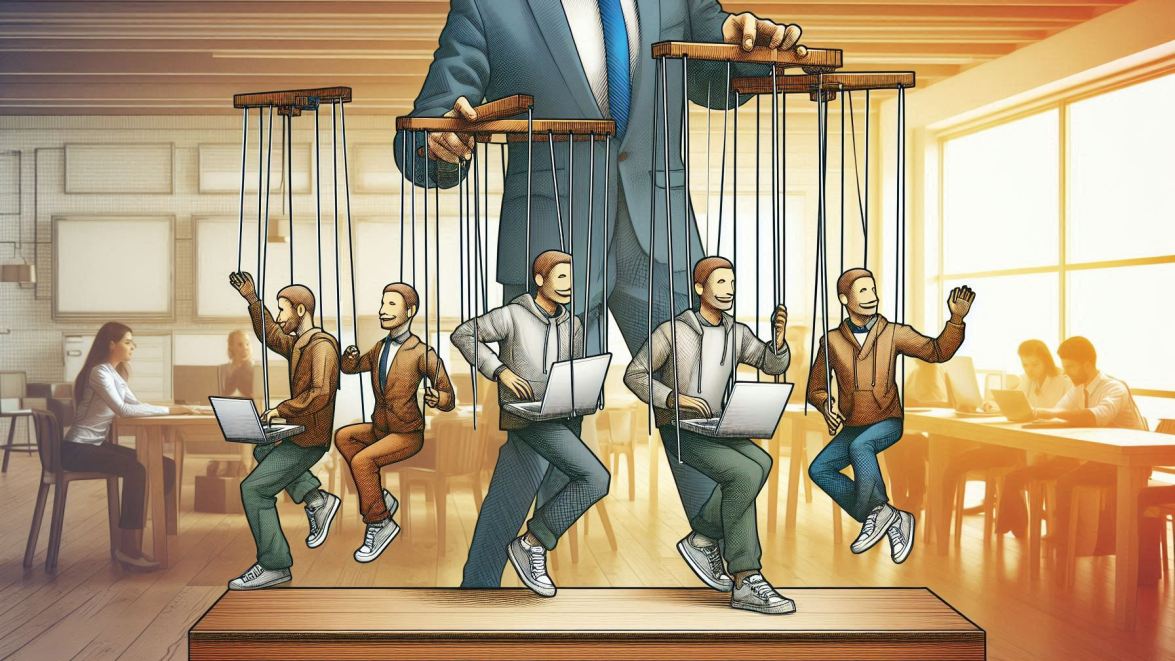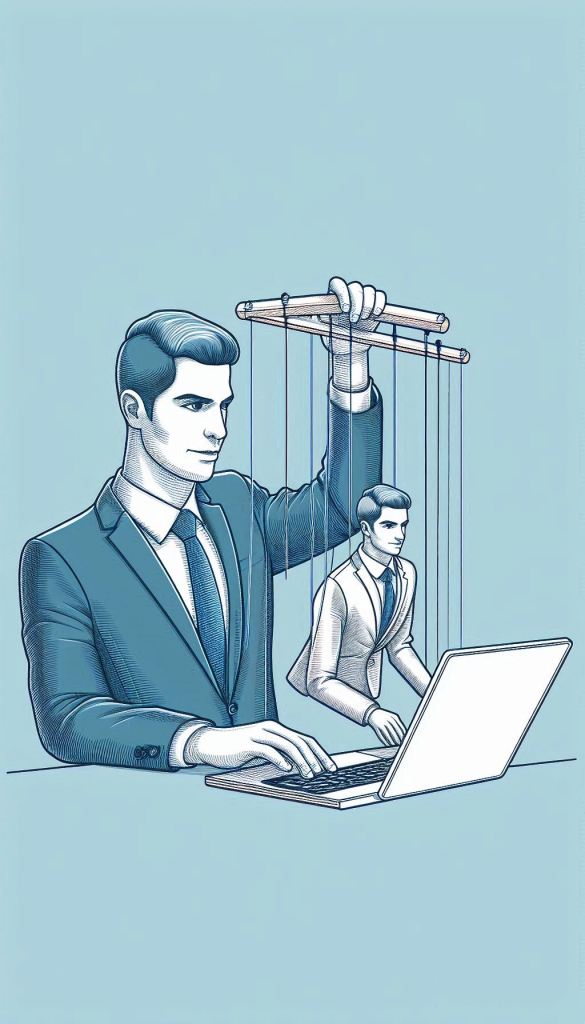
Six steps to avoid micromanagement
Micromanagement is a strange dichotomy. We all agree it causes inefficiency, and yet most of us seem to still be experiencing it. It is widespread but no-one admits to being a micromanager. But what is micromanagement? Why is it such a problem and, most importantly, what can leaders do to prevent it?
What is micromanagement?
There are a range of definitions of micromanagement, but the one below from Gartner is fairly typical.
Micromanagement is a pattern of manager behavior marked by excessive supervision and control of employees’ work and processes, as well as a limited delegation of tasks or decisions to staff.
Gartner
In the past, micromanagement might not have been seen as unusual, or even undesirable. What we now call “micromanagement” was the explicit intent of Taylor’s Scientific Management approach.
Taylor believed in the creation of a class of managers. These would define and document the correct method for the work. The workers would then exactly apply the techniques the managers had defined.
Each man receives … complete written instructions, describing in detail the task which he is to accomplish, as well as the means to be used in doing the work.
“The Principles of Scientific Management” – F.W. Taylor 1911
The more recent concerns over micromanagement are in Gartner’s use of “excessive”. We typically only refer to micromanagement when it is a problem. In the 1960s “micromanagement” seems to have started to appeared in research. This seems to be part of a recognition that Taylor’s reductionist view was breaking down. There was a realisation that close and detailed management did not work well within the growing area of knowledge industries.
One early story about the beginnings of Silicon Valley shows the growth of this idea with the decision in 1957 of employees of Shockley Labs to abandon the firm to form Fairchild Semiconductor specifically to escape Shockley’s intense and controlling “micro”management style.


Why is micromanagement a problem?
Scalability
When building structures and systems for a scaling organisation, it is key to build in “scalability”. All processes need to be considered in the light of the expected growth and change of the organisation. The “right” processes for today will not be the best for tomorrow as the organisation will have changed. We can see in Greiner’s model that adapting management approaches to change is key to success.
Managerial problems and practices are rooted in time. They do not last throughout the life of an organization
Greiner 1998
Micromanagement is at heart not a scalable approach. Managers need to spend significant time and effort checking and replicating work. Their detailed knowledge needs to encompass all the knowledge of their teams. This substantially limits the scaling ability of management.
Waste
Managers are not the ones doing the work. This means that they are inevitably working with a lack of immediate data.
In order to compensate for this lack of data, the manager will request more data from the teams. This tends to build a flow of reports from team to manager.
These reports are waste (a reminder here that “waste” in Lean terms means work which does not deliver value to the customer). The team has less time to work on creating value because they need to support the micromanagement of the manager.
Agility
We aim to build organisational agility. However, if decision making requires escalation, this will necessarily impact that agility. Each escalation will slow the organisation’s ability to respond.
We are aiming to achieve rapid feedback to change and this can only be achieved by focussing decision making on the lowest viable level. To do this we must empower the teams to make their own decisions rather than micromanaging them.
Innovation
Knowledge industries thrive on idea generation. The ability of teams to experiment, try out solutions and come to the best answer. This needs approaches such as diverse opinions, cross-functional teams and self-transcendence.
Micromanagement works against this. By routing the decisions through one individual, diversity of thought is reduced. If that manager gives instructions, the team are unlikley to propose alternatives and innovation suffers.
Micromanagement is the enemy of innovation and progress.
Jeff Bezos
Demotivation
Modern knowledge industries differ from Taylor’s factories not only in the agility required. There is also a huge difference between motivated and unmotivated staff. Motivation has an impact on performance as well as the obvious costs of replacing staff. And, contrary to the “Theory X” ideas, motivation is internally generated.
Pink’s motivation model categorises motivation into autonomy, mastery and purpose. Micromanagement will impact all of these, and so can be hugely damaging to overall motivation.
- Autonomy – clearly micromanagement is aimed at reducing individual autonomy in favour of management power.
- Mastery – the Scientific Management basis is that the manager has the key skills and knowledge to make decisions. This tends to prevent individuals gaining the opportunities to gain those skills themselves.
- Purpose – micromanagement focusses on instructing teams on what needs doing, rather than setting context. This means that the purpose is often kept hidden.
Value
Of course what matters at the end is customer value. All of these issues will impact on the business ability to deliver customer value. Low agility, poor decision making, lack of knowledge sharing, lack of innovation, will all lead to less value being generated for the work being done.
If micromanagement doesn’t work, why is it widespread?
There are few managers who would openly talk about themselves as “micromanagers”. However, most people seem to have experienced micromanagement at work. A survey by Trinity Solutions suggested 79% have experienced micromanagement from their current or past managers.
Clearly micromanagement is widespread. In the same survey, half of managers admitted that they had been micromanagers themselves, currently or at some point in the past. We have seen micromanagement can be damaging. So it is worth looking at some of the reasons why managers may fall into micromanaging,
The aim of leadership is not merely to find and record failures of men, but to remove the causes of failure: to help people to do a better job with less effort.
W.E. Deming

Disconnect
A significant amount of micromanagement is unconscious. The manager is unaware that there is any issue. Remember that the Gartner definition referred to “excessive supervision and control”. When does this become an “excess”?
Where managers are separated from their teams, they may be unaware of the impact of their style. They may not realise that the desire for status reports is timeconsuming, or that constant process approval requirements prevent effective working.
This will be observed in particular when the team and the manager are separate, whether by physical location, infrequent meetings or an organisational hierarchy which boosts manager status.
Mimicry
Micromanagement often occurs because a manager is copying what they see elsewhere in the organisation. In particular, if a manager is themself micromanaged, they will tend to see this as a desirable trait. The behaviours of top leaders will be copied, either consciously (to gain attention and promotion) or unconsciously (as a learning process)
Egotism
Central to the Scientific Management approach is the belief that managers are “better” than workers. That manager experience means that they can, and should, make the decisions. A micromanager may believe that they are smarter and more capable than their team.
Some managers are more egocentric than others. This is often a matter of company culture. This is often reinforced by the organisation emphasising that the manager has been promoted because they are “the best”. This reinforces the idea that they should make the decisions for others.
Lack of Training
Micromanagement is often observed in people who have moved into management roles with no training. An experienced engineer may be an expert in their field. When promoted to be a manager, they continue to want to be an expert. But as they are no longer actively developing, they use their expertise to make decisions for others.
Training in the difference between management and individual contributor roles, especially skills around effective delegation, are key. It is also important to ensure that people really want to be managers before moving into management.
Micromanagement is a failure to delegate effectively and trust your team.
Ken Blanchard
Fear
As in so many areas of organisational dysfunction, mismanagement can be driven by fear. In my experience, I would suggest that most of it can be put in this category. When a manager is faced by potential negative outcomes, they aim to avoid these. Especially if they are inexperienced, this can push them into wanting more control. Management and leadership rely on the ability to influence others. Micromanagement suggests the seductive alternative of enforcing outcomes.
Micromanagement is the result of a lack of confidence in one’s own ability to lead.
Richard Branson
I have typically seen three main areas where managers respond to fear by micromanagement
Fear of replacement. The team will not always be the manager’s team. Some of them will be promoted and become peers. Maybe even overtake the manager. This can be controlled by ensuring that the team always know who is in charge.
Fear of failure. A project runs into problems. In an attempt to solve the problems, they start to control all the aspects of the project. There is not enough trust to support the team in ensuring the best outcome. Ironically, micromanagement rarely does lead to success.
Fear of irrelevance. A manager does not understand their role and purpose. Perhaps they are used to being an individual contributor. Now they have to wait for others to do the work. In an attempt to seem more relevant, they start to take more control.

Good Practices
As an Agile Leader we need to guard against micromanagement both for ourself and for managers in our teams. There are five strong good practices here which are described in other Plays. Be guided by one of my favourite quotes below.
If you want to build a ship, don’t drum up people to collect wood and don’t assign them tasks and work, but rather teach them to long for the endless immensity of the sea.
Antoine de Saint Exupéry
=> Understand how self-managing teams function. We are seeking to get the right balance of control. We inspire our teams and give them guidance, but allow them to function as self-managing teams.
=> Build a low blame culture built around psychological safety. This will remove one of the key drivers of micromanagement (and other poor management behaviours), the fear of failure by managers.
=> Build a management structure which is non-hierarchical and which sees managers as supporters of their teams. This will allow managers to focus on supporting, rather than directing, their team.
=> Agree a strong, delegated decision making process which leverages team knowledge. Be clear what decisions are taken where, when the team should take decisions and when they should escalate them.
=> Avoid hero culture in favour of sustainable pace development. This reduces the self-importance and ego of managers and emphasises their supporting role.
=> Help, support and coach new managers to understand how their role is different as a leader. If you are a new manager, seek support and coaching yourself. When you are leading, your role is not to try to continue to manage detail, but to delegate effectively.









Leave a Reply